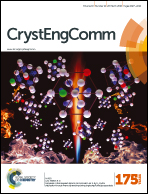Effect of an aryl amide derivative on the crystallization behaviour and impact toughness of poly(ethylene terephthalate)
Abstract
Poly(ethylene terephthalate) (PET) and aryl amide derivative (TMB-5) blends were prepared by melt blending. It was found that TMB-5 shows a significant nucleation effect on PET and especially the non-isothermal nucleation efficiency reached up to 80.7% at a very low content of 0.6 wt% TMB-5. The effects of TMB-5 on the crystallization behavior and mechanical properties of PET were systematically investigated. DSC results show that crystallization temperature of PET apparently increased by nearly 20 °C with the addition of 0.6 wt% TMB-5 during the cooling process. A remarkable acceleration in the crystallization rate of PET was achieved as analyzed using the Avrami equation. Wide angle X-ray diffraction (WAXD) and polarized optical microscopy (POM) results show that the addition of TMB-5 remarkably increases the crystallinity and nuclei density of PET. Small angle X-ray scattering (SAXS) measurements reveal that the long period of PET decreased and lamellar thickness increased with an increase in TMB-5 content. The impact strength of PET was greatly enhanced by the addition of TMB-5, and a toughening mechanism was proposed.


 Please wait while we load your content...
Please wait while we load your content...